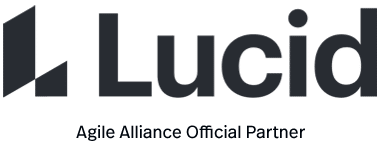Business Agility is the ability of an organization to sense changes internally or externally and respond accordingly in order to deliver value to its customers.
Business Agility is not a specific methodology or even a general framework. It’s a description of how an organization operates through embodying a specific type of growth mindset that is very similar to the Agile mindset often described by members of the Agile software development community. The nature of that mindset is described in the Values and Principles section.
When Applicable
Business Agility is appropriate for any organization that faces uncertainty and rapid change.
Values and Principles
Business Agility values individuals and their interactions, collaboration, driving toward an outcome, and constant learning, similar to Agile software development. The principles that serve as the foundation of Business Agility include iterating to learn and reflect on feedback and adapting both product and process.
Practices
There is no prescribed set of practices that are appropriate in an organization practicing Business Agility. Rather, any practice that is appropriate for that organization’s context and helps an organization embrace change and delivers value to its customers is appropriate.
Roles
No recommended set of roles is appropriate in an organization practicing Business Agility. Rather, any role that is appropriate for that organization’s context and helps an organization embrace change and deliver value to its customers is appropriate.
Lifecycle
There is no prescribed lifecycle for Business Agility. Any lifecycle that allows an organization to iteratively and incrementally deliver value to its customers since the value those customers realize, and respond accordingly is appropriate.
Origins
The ideas behind Business Agility arose independently and simultaneously from a variety of sources. It appears that the ideas originated with Agile manufacturing in the early 1990s when members of industry, government, and academia got together to figure out how to make the United States competitive in manufacturing. These ideas were initially described as Agile manufacturing and were later described as enterprise Agility by some of the people involved in those original discussions.
1991
A group of 15 executives from 13 companies joined together to produce the 21st Century Manufacturing Enterprise Strategy, An Industry-Led View report, and create the Agile Manufacturing Enterprise Forum. This work results in the spread of the concept of Agile manufacturing and a broader view of the Agile organization as one situated to deal with change. The full report is available in paperback form.
2001
Rick Dove, one of the participants in the Agile Manufacturing Enterprise Forum, publishes Response Ability: The Language, Structure, and Culture of the Agile Enterprise. The book describes how to prepare organizations to respond to their changing environment and appears to be the first extensive treatment of Agility at the organizational level. Many of the ideas contained in the book are also available at the Paradigm Shift International Library.
Primary Contributions
The primary contribution that Business Agility offers to the Agile software development community is a means by which an entire organization can be positioned to experience the full benefits of an Agile mindset.
Further Reading
Response Ability: The Language, Structure, and Culture of the Agile Enterprise By Rick Dove Wiley March 30, 2001. Book Review by Kevin DeSouza





